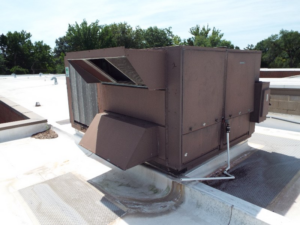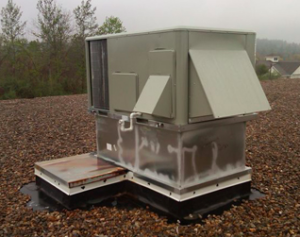What Is An HVAC Economizer?
The purpose of an HVAC economizer is to take the outside air, and use it to efficiently cool a building. Economizers, different than many other HVAC units, are not able to be used in every condition. Two different conditions have to be present in order to obtain use out of an economizer.

First, the outside air has to be below the temperature that the building is set to. Second, the humidity levels of the outside air need to be less than that of the inside air.
If the building is too hot, the unit will use cold air from outside to relieve stress on the A/C.
Economizers work extremely well in temperate climates but are useless in warm and muggy locations. Places like Florida for example, have so much humidity in the air that it would be ineffective to install a HVAC economizer.
HVAC Economizers Variations
Each type of HVAC economizer is different in its own way. Here is a look at the three major types and how they differ.
Dry Bulb Economizer
The dry bulb variation is the most basic version of an HVAC economizer. It uses the standard process of detection for monitoring outdoor air levels, but doesn’t have any detection for humidity levels. By not accounting for the humidity, problems can arise for in-building comfort.
Single Enthalpy Economizer
The single enthalpy economizer takes the humidity of the outside air and the temperature into account when deciding whether to bypass the air conditioning. This variation is the most popular type of economizer. It bests the dry bulb by providing more comfort for the building’s patrons.
Differential Enthalpy Economizer
The differential enthalpy version takes even more factors into account. Its process includes return air. Return air is the air that is retained from the economizer after heating or cooling a room. This is an important measurement because it helps maintain efficiency in your building. This economizer also employs two sensors that measure the enthalpy of indoor and outdoor air.
Energy Consumption
Powerhouse Dynamics says HVAC economizers are a great way to save energy.
Outside air helps relieve the constant stress that is put on an HVAC unit. Maintenance and replacement are two of the most expensive aspects of any HVAC system. Economizers help by diffusing the work load across the board, instead of fully relying on the A/C. Because of this, your HVAC unit has the possibility of extending its life span by multiple years.
Air Quality
Air quality is a huge advantage of employing an economizer in your HVAC process. By using outside air, you are able to introduce, new, clean air into your building’s system. This not only provides your workers with a healthy environment but also boosts productivity. A study done by UNT showed that,

Along with this, the science of economizers helps to boost productivity. Clean outdoor air helps raise the oxygen levels in buildings, which leads to increased cognitive function.
Unit Upkeep
Due to the fact that economizers are rooftop units, they’re more likely to incur damage. In areas where hail is common, economizers are the first things hit by the precipitation. There have also been multiple accounts of trees falling onto rooftop economizers, causing crippling damage.
The unique role of economizers makes damage harder to find within the unit. Since the economizer isn’t constantly running, it takes longer to notice any operating damage. Incorrect installation plagues almost 50% of new economizers, breeding effectiveness issues.


Summary
The main goal of an HVAC economizer is to reduce the load on your A/C unit and save money. These rooftop units are able to tap into the air present outside to provide cooling within your building. With three different types: dry bulb, single enthalpy, and differential enthalpy, there are many options to choose from. Energy consumption and air quality are two large advantages of using an economizer. However, keeping track of maintenance is very important for these units.


